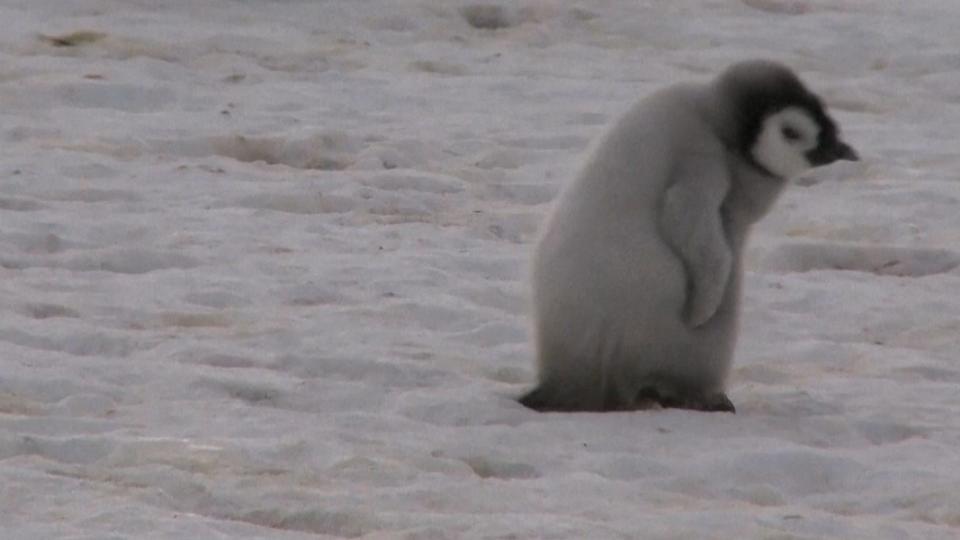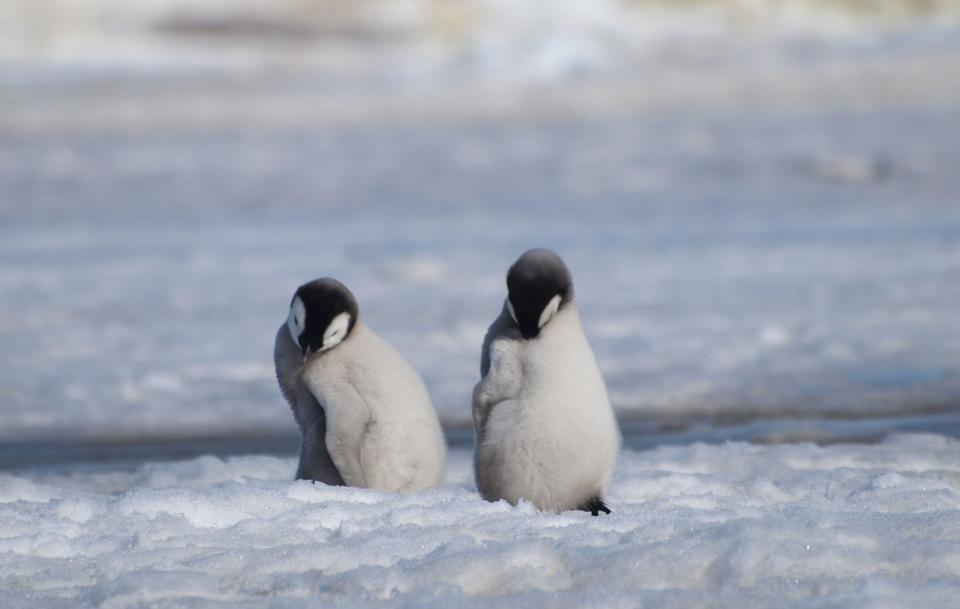Emperor penguin colonies discovered by scientists through bird poop on satellite imagery
New satellite imagery reveals four previously unknown emperor penguin colonies in Antarctica.
The penguins move as the sea ice they use as hatching grounds becomes more unstable because of warming oceans. The loss of sea ice is harming emperor chicks' chances of survival, reports the Associated Press.
"Because of the warming oceans, there will be less sea ice, " Daniel Zitterbart, a penguin researcher at the Woods Hole Oceanographic Institution, told USA Today. "And less sea ice means less stable breeding sites for emperor penguins"
Zitterbart was not involved in the study, but works closely with Peter Fretwell, a geographic information officer at the British Antarctic Survey and the researcher who discovered the new colonies.
According to the researcher, Fretwell did an overall count of emperor penguins globally in 2012.
"Since then, Peter has been scrounging through satellite imagery and he keeps finding emperor penguin colonies that have done this before," said Zitterbart.

If a colony disappears from its usual spot, it doesn't necessarily mean it met its fate.
"If the penguins go away or they're not where we thought they were supposed to be we might think, 'Oh they're doing really bad here because we don't see them anymore,'" said Zitterbart. "But what happened was they just moved."
The discovery brings the number of known penguin colonies to 66, wrote Fretwell in the journal, Antarctic Science.
Despite the evidence- Why climate change denial still thrives online
Bird poop the key to spotting the new emperor penguin colonies
NBC News reports that scientists found the colonies by accident when they spotted guano, also known as bird poop.
Fretwell told the publication that satellite images showed reddish-brown smears on the otherwise colorless ice. The guano, which is dark enough to see from space, inspired the scientists to use the streaks of excrement to track down the colonies.
"It's a very important result scientifically, even though it's a light-hearted method," Fretwell said.
Where did these emperor penguin colonies come from?
Fretwell told AP News one of the colonies moved 19 miles to the east of their original location, which started becoming unstable in 2016.
"Emperor penguins have taken it upon themselves to try to find more stable sea ice,” he said to the publication.
According the AP, Fretwell believes the newly discovered colonies existed for years, but researchers didn't spot them til now.
The publication reports the four colonies are small. According to Fretwell, they have about 1,000 breeding couples. The entire population of emperor penguins totals to less than 300,000 breeding pairs.
Zitterbart told USA Today the colonies don't "have a real impact on the overall population." However, the AP reports it does give scientists an understanding of where these colonies are going.
Where do penguins live?
In the wild, most penguins live south of the equator. Many, including the eeperor penguin, are found on the Antarctic coasts and sub-Antarctic islands, according to the Australian Antarctic Program.
Penguins live in a wide range of temperatures. But the sea ice emperor penguins call home can reach a chilling negative 76 degrees Fahrenheit, according to Smithsonian.
As for snow, Antartica does not get as much as you would think per year. Windy conditions on the continent make it hard for exact measurements. Across Antartica, the average accumulation of snow is estimated to be around 150 millimeters, or under six inches, of water per year, says the Australian Antarctic Program.
The future of emperor penguins
A study published by the Global Change Biology estimates that 98% of the emperor penguins species will disappear by the year 2100 if action is not taken to slow the effects of climate change and the loss of sea ice.
While the penguins are not considered endangered, they are a "near threatened" species. The U.S. Fish and Wildlife Service even provided Endangered Species Act Protections to the penguins.
Zitterbart, however, still has hope for the flightless bird and called them a "very adaptive species."
"I hope it will adapt," he said. "I wouldn't do my job if I had no hope. But we have to make sure that we don't put additional stressors on the Penguin."
According to the scientist and the Center for Biological Diversity, penguins face the following stressors:
Climate change
Melting sea ice
Needing to change locations
Ocean acidification
Diminished access to their key food source, krill, because of industrial fisheries

If the world loses these penguins, an important ecosystem loosed biodiversity, said Zitterbart.
"If we lose biodiversity, it will not be adaptable [and become a] less productive ecosystem," said Zitterbart "If an ecosystem is less productive then the less carbon it will be able to consume, through the phytoplankton."
The researcher says all this results in the planet losing its capability to keep itself as cold as possible.
Contributing: Olivia Munson, USA Today
This article originally appeared on USA TODAY: Emperor penguin colonies discovered in Antarctica

